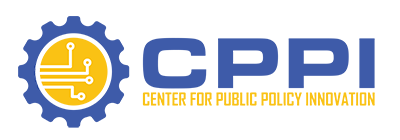The Internet of Everything (IoE) represents a revolution in connectivity that will fuel unprecedented economic growth and brings with it the potential for enormous societal benefits. It is creating a “connectivity economy” that brings together people, networks, and devices to generate greater efficiencies, improved reliability, new capabilities, and richer experiences. The growth of IoE is happening at an accelerated rate as evidenced by the explosive growth of networks, big data, data analytics, cloud computing, and mobile applications and devices.
By some estimates, we can anticipate IoE to create between $14 trillion and $15 trillion in economic growth over the next decade, with the potential to increase corporate profits by nearly 21 percent in the same period.
The rapid adoption, growth, and spread of IoE is inevitable. But even as we see massive growth in IoE, we must also acknowledge and work to mitigate the considerable risk associated with these advances. Reliable security and continued “public trust” in IoE are fundamental to the success of the IoE revolution.
Some of the more perplexing risks include the exponential growth of new attack vectors as more and more devices are plugged into the network, presenting new vulnerabilities, and the ability to remotely cause physical destruction – or death – through the Internet.
Public trust in security over the IoE infrastructure is critical to the successful proliferation and adoption of new technologies. Would you climb aboard an autonomous vehicle if you didn’t trust the security of the platform? Would you be comfortable with a fleet of autonomous UAVs flying overhead if you thought their security could be compromised? Would you sleep well at night if you thought your home security system was hackable?
And what about SCADA systems that allow remote access and control of critical infrastructure at power plants, factories, water treatment facilities, and oil and gas pipelines? Let’s not forget about systems that help manage airports, ports, and the space station. Presently, the public generally has trust in the security of our critical infrastructures, but with the advance of IoE and the proliferation of devises with access to these systems, we must work to insure that new risks are mitigated and public trust is maintained.
This raises interesting public policy questions related to the proper of role of government in securing IoE. One major function of government is leadership. Government leadership is needed to convene stakeholders in a way that allows for the thoughtful creation of standards and protocols to address security, resilience, and recovery. In the U.S., NIST has taken on that role by administering the National Strategy for Trusted Identities in Cyberspace (NSTIC). Going forward, government leadership will be needed to establish or designate a standing body to monitor and mitigate situations as they arise.
There are an infinite number of examples we can imagine where IoE vulnerabilities could be exploited, and with the rapid proliferation of IoE we must act soon to secure the platform or risk being overwhelmed by security gaps. That’s why it is important to act now, in collaboration between the public and private sectors, to put in place the right security technologies, protocols, and public policy to protect the integrity and defend the public’s trust in IoE.
